Supporting materials appear below
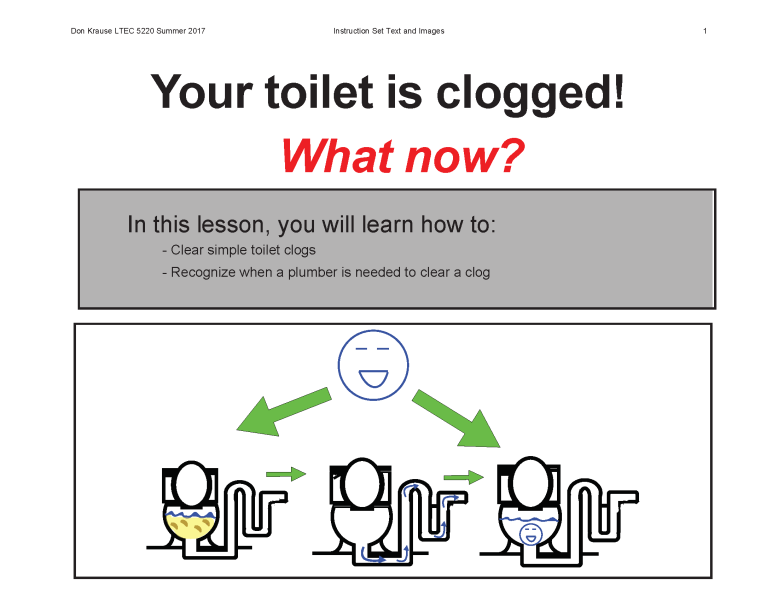
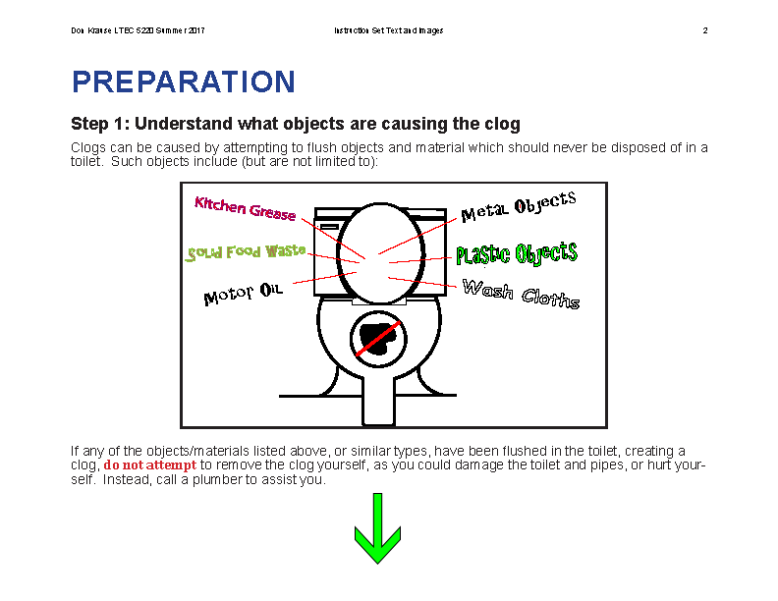

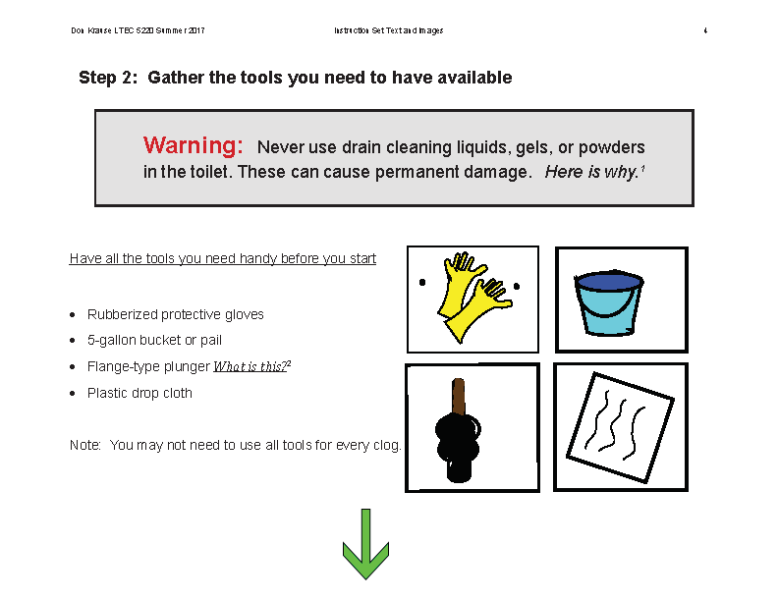
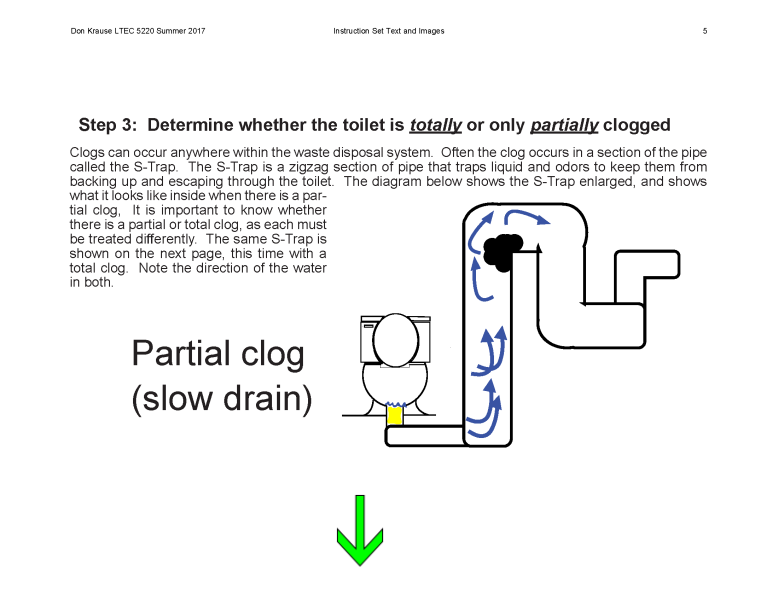
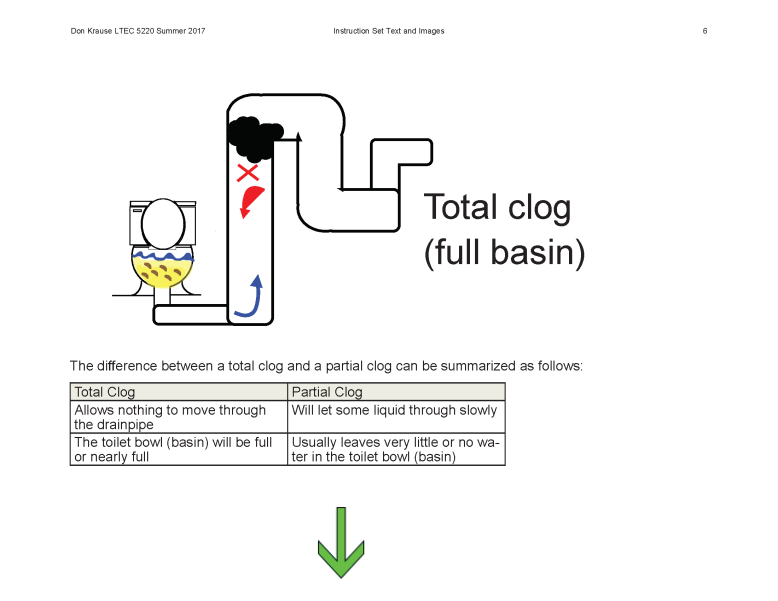
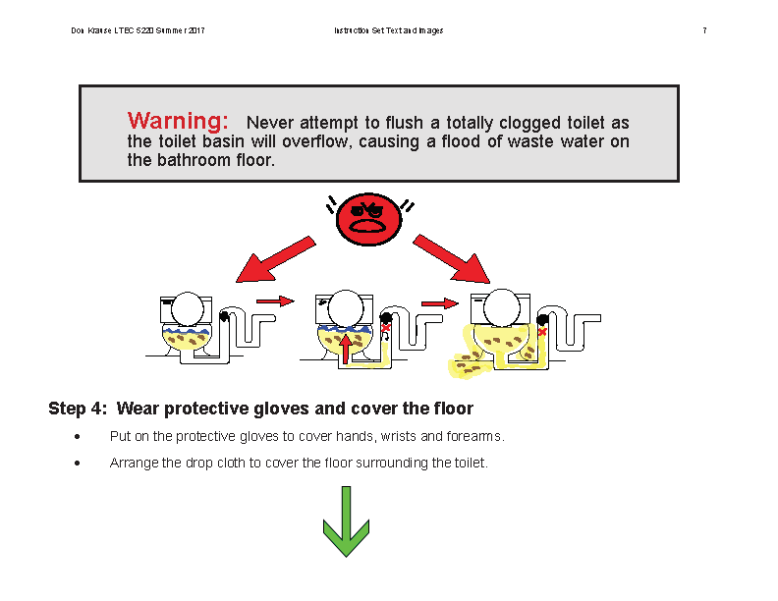
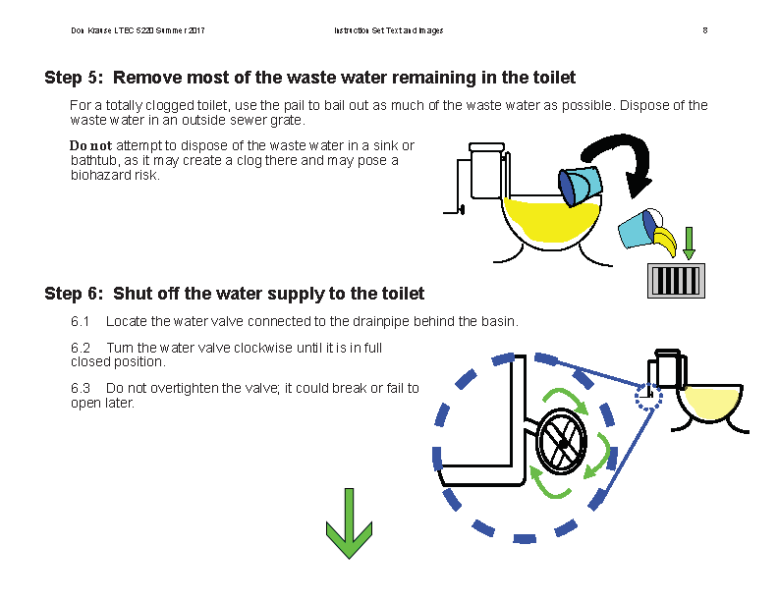

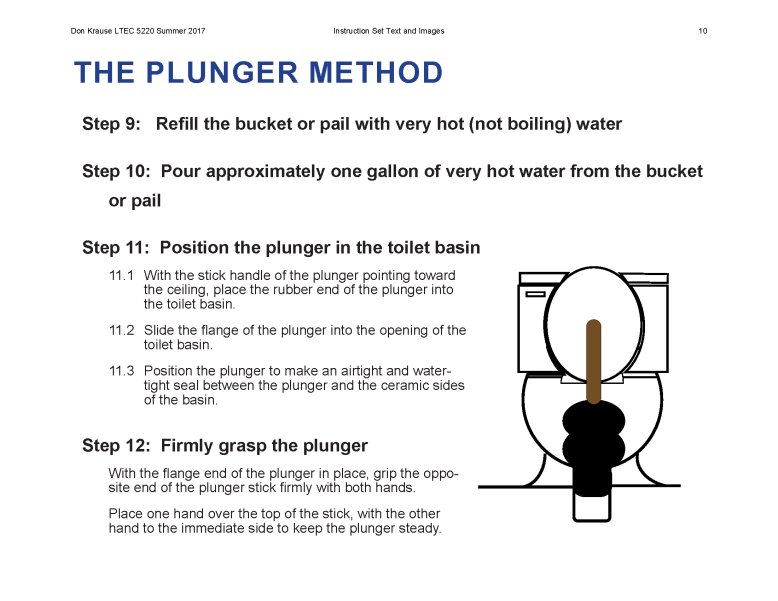
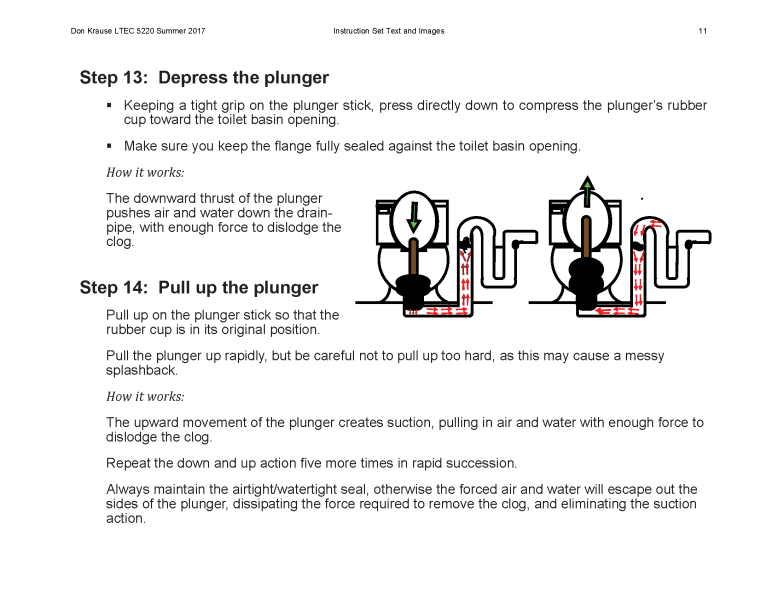

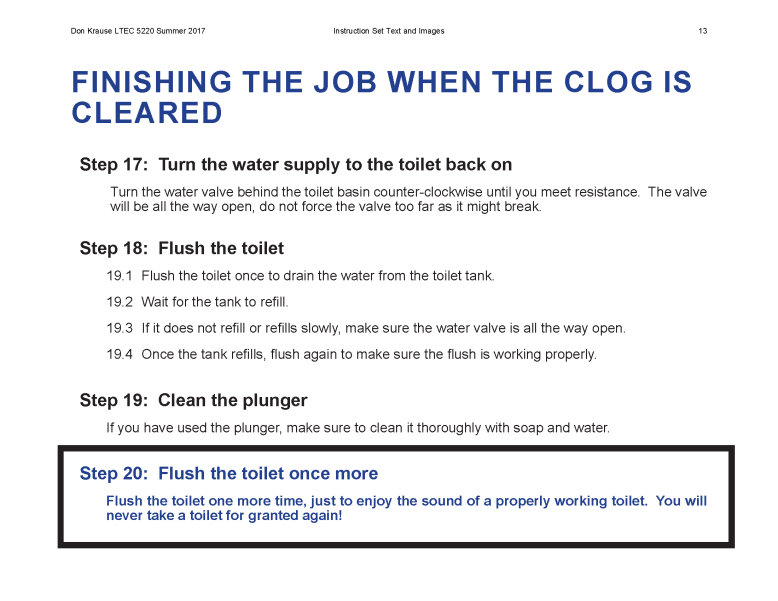
PDF Version
Design Document
Designing with Text and Images
Conclusions
Reflection
I consider the toilet clog instruction set with text and images to be a very effective combination for the toilet clog instruction. Braden (1996) states that “Illustrations can help learners understand what they read, and can help learners remember what they read”. This is because the illustrations are processed very efficiently through working memory, and have a strong capability to act as cues to schema that are constructed within the learner’s mind. This is particularly true if the pictures are closely tied, both in physical proximity and in visualization, to the accompanying text (Kozma, 1991).
I made a very conscious decision to place diagrams directly next to, or even inside the related text. The “wrap-around” effect, that I was able to accomplish through Adobe InDesign, placed the image squarely within the accompanying words. Text and image were being presented to the learner at the same time, so that the visualization accompanied the recognition of the illustration in short order. I find it very frustrating to read textbooks where the text references illustrations or photographs that are on an entirely different page. This is especially true of textbooks which are poorly translated into an e-book format. That requires the reader to go back and forth between pages to combine the text and image in her mind. At the very least, the reader should be able to access the illustration through a hypertext link which would bring up the figure for review at the same time the text was being recognized.
My recommendation to designers for the most effective use of text with images, is to create storyboards which attempt to tell the story with images only. My experience has shown me that the image-only format stimulates creativity which serves to enhance the richness of the learning experience once text is added to the presentation. Admittedly this is more difficult when presenting abstract concepts like democracy or advanced physics, but even the struggle and failure to meet this challenge will improve the final product when text and images are brought together.
References
Braden, R. A. (1996). Visual literacy. Handbook of research for educational communications and technology, 3(5), 491-520.
Kozma, R. (1991). Learning with media. Review of Educational Research, 61(2). 179-211.